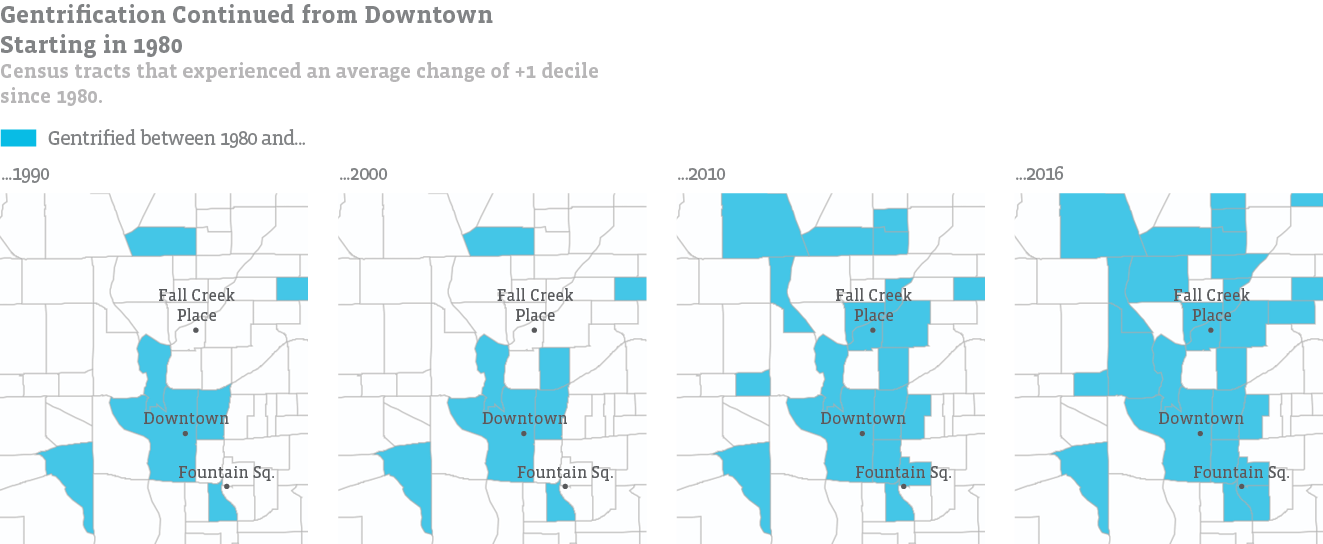
Gentrification of Indianapolis neighborhoods over time. Source: SAVI community information system, 2018
Population growth is a key indicator when thinking about global trends and provides a better understanding of local issues such as neighborhood change, suburbanization, and gentrification. The map above shows gentrification of Indianapolis neighborhoods over time. A study by our SAVI analysts in 2018 revealed most of Indianapolis’ core neighborhoods have lost population, experienced significant income declines, and not kept pace with the region’s increased educational attainment.
From 1970 to 2016, the forces of suburbanization and white flight, followed by the ensuing forces of urbanization, have significantly changed neighborhoods across the Indianapolis region. White, educated, and middle- to upper-income households left the core of Indianapolis in the 1970s. They moved to the outskirts of Marion County and to other counties, enabled by the construction of Interstates 65 and 70 (fully complete by 1974), which made it easier to commute to Indianapolis from suburban areas. Racially discriminatory real estate practices like blockbusting, and lending practices like red-lining, led white households to leave Indianapolis and prevented black households from moving to new suburban communities.
Since 1970, average family income grew by 26 percent across the region, but half of Indianapolis residents live in neighborhoods where incomes fell by more than 15.6 percent. And while the region has grown in population by 54 percent since 1970, Center Township has lost almost half of its residents in that period. The share of the population with a bachelor’s degree has increased from ten percent in 1970 to 33 percent in 2016, but half of Indianapolis residents live in neighborhoods that have not kept paced with these improvements. (These neighborhoods experienced a increase of 9.5 percentage points or less.)
Some gentrifying neighborhoods near downtown and north along the Meridian/College corridor are growing faster than the region in terms of income and bachelor’s degree rates. These areas are also attracting young adults and white residents at a faster rate than the region. However, these demographic changes have not nearly reversed population losses. Downtown, Mass Ave, and Fletcher Place grew by a combined 3,200 since 1970, but most other gentrified neighborhoods still have a fraction of the population they once had. Many neighborhoods reversed their population declines (especially between 2010 and 2016), but it remains to be seen if they can restore population levels they had decades ago.

